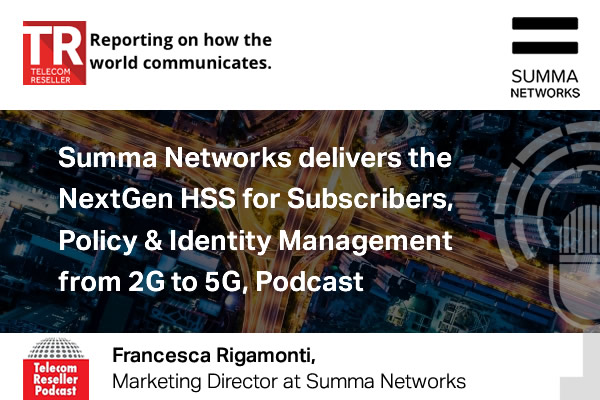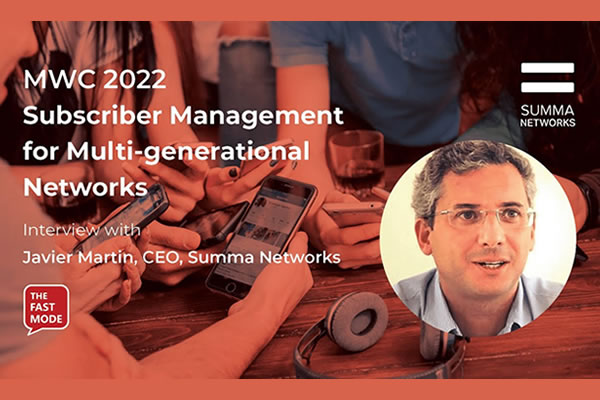The latest news and insights

Bridging the 5G chasm: How VoLTE can help rural telcos support next-gen services
Few technology innovations have been as heralded — or as polarizing — as 5G wireless communications. Over the last several years, mobile providers around the world have been heavily promoting it as the ideal infrastructure to support an expected wave of applications and services.
There’s a good reason for this. The benefits of 5G are compelling: It offers customers higher bandwidths, lower latencies and superior security, attributes that align with the growing interest among enterprises and consumers to leverage emerging capabilities built on augmented and virtual reality, artificial intelligence and a whole new set of business applications that leverage deep data.
The flip side of the 5G conundrum is that it is a technology that is extremely expensive for most carriers to deploy, especially for small and rural mobile providers that are resource constrained. First, there is the investment of acquiring 5G technology, which itself can be too high for many of them. And then there are significant added costs due to the technological shift into Cloud Native technologies for training engineers, technicians, and other professionals on a technology stack that is completely different from previous wireless infrastructures. The change in needed skills is a big challenge for many service providers.
Then, there is the business case for validating this investment. Most operators may not see an immediate shift in customer requirements that would demand an urgent investment in 5G. Smaller providers can also determine that they have more than enough bandwidth with their 4G, and even 3G, networks to support customer needs for the foreseeable future. And even with the increased adoption of new services and capabilities, they may feel that they can still adequately serve their clients with their current infrastructure.
The point that really summarizes the challenges around the 5G transition is the interworking. The time when telecom networks worldwide become just 5G standalone will take place many years from now, and by then they may even be superseded by 6G deployments. In the meantime, networks will be a mix of 5G SA, 5G NSA-4G, 3G and 2G for different geographical areas, including complex roaming scenarios that are still under development. And along that line, the first service that will suffer from this situation will be voice.
Forcing the Issue
Voice is the most powerful communication tool for human beings, with up to eight times more content density than text. Voice through mobile phone lines works currently over circuit-switched networks like 2G and 3G would work only as packet data over IMS. So, if someone in Whatsapp or any other IP based service is in the midst of a phone call or watching a video and another phone call comes in, there will probably be an interruption of the data session, resulting in the call or video terminating, since the connection has switched to 3G to accept the call.
As a consequence, and as long as carriers switch off 3G networks to leverage spectrum for coming 5G services, the solution for carriers is to offer VoLTE and VoWiFi over 4G, meaning voice works natively on IP. Besides, voice in 5G Standalone (VoNR), will work over IMS as well so that evolution is as well needed for the 5G transition.
But for Tier 2, Tier 3 and rural telcos, waiting for a structured transition to 5G may not be all that simple. Many regions, where large carriers have heavily invested in 5G, are seeing the decommissioning of 3G and driving traffic customers to 5G networks, eliminating the infrastructure that many providers use as transport for voice services. And carriers left with only 4G networks can’t provide mobile voice services as we know them.
This decision is impacting many telcos which still need to rely on their 3G infrastructures. And though it may be hard to believe, some operators still use 2G to support IoT data traffic.
Attractive option, complex solution
As outlined above, perhaps the most effective strategies are the additions of Voice over LTE (VoLTE) and Voice over Wi-Fi (VoWIFI) solutions into legacy networks.
Long promised by telecommunications providers, it is only in recent years that VoLTE and VoWIFI have started to gain traction as viable options for maintaining quality voice services in a world that is rapidly shifting to 4G and 5G. But implementing VoLTE and VoWIFI can also have severe challenges.
First, the number of network components needed is not minor and its interworking is not obvious. Carriers are faced with selecting separated elements from different vendors, deploy them, interconnect the different elements and do end2end testing.
Besides, since MNOs and MVNOs have their own unique systems and processes, the integration for VoLTE and VoWIFI can be arduous. There are several technical hurdles that need to be overcome in each situation, such as compatibility with other networks.
The implementation process can be long and difficult, but some of the more successful VoLTE/VoWIFI vendors also have solid solutions that can help expedite implementation. For example, some Subscribers Data Management (SDM) vendors now provide a VoLTE-in-a-Box offering that bundles all the various network elements needed for a successful ‘plug&play’ deployment. A software-only solution, a VoLTE-in-a-Box offering should include an IMS core, ePDG and full policy and identity management protocols that are necessary to allow access to the network.
A compelling VoLTE solution should also have multiple deployment options to satisfy various deployment models, including hardware, fully virtualized in various containers, and through any public cloud or private cloud. The system software should be carrier-grade to ensure maximum uptime, and should comply with industry standards like SIP and 3GPP. This point is critical; it assures integration with all legacy providers, allowing customers to maintain seamless use of voice services across a hybrid infrastructure. In addition, providers should choose a solution that can easily scale, supporting new users with no disruption.
Conclusion
Is 5G coming? Absolutely, but what is less clear is when it will actually arrive or how long the transition will be. In the interim, the disruption in the marketplace is real and troubling. In many countries, smaller operators that relied on 3G networks have to quickly find alternatives to maintain service levels — especially with regard to voice communication.
VoLTE and VoWIFI are the way to go for these carriers, especially some of the new ‘software-only’ solutions that have entered the market. To overcome the challenge of such a complex deployment with an uncertain ROI, carriers need to look at options where these technologies can be quickly and economically deployed — in a wide range of environments— to deliver the seamless and reliable services that subscribers depend on.
Javier Martin, Chief Executive Officer, Summa Networks
Article published in: https://www.rcrwireless.com/20230119/5g/bridging-the-5g-chasm-how-volte-can-help-rural-telcos-support-next-gen-services-reader-forum
Latest In the media

Summa Networks delivers the NextGen HSS for Subscribers, Policy & Identity Management from 2G to 5G, Podcast


